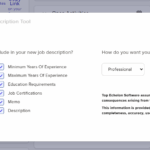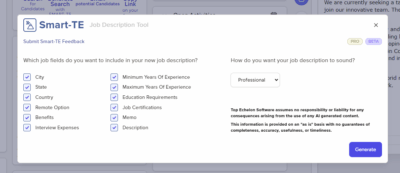Payroll management software is a type of software designed to help organizations manage their payroll processes more efficiently.
The software automates many of the tasks associated with payroll management, such as calculating employee salaries, withholding taxes, and other deductions, and issuing paychecks. It can also help organizations track employee hours, manage benefits and other compensation, and generate reports related to payroll and compliance.
This software can be customized to meet the specific needs of each organization. Some software solutions are designed for small businesses with a few employees, while others are more suited for large enterprises with thousands of employees.
Payroll Management Software Features
The core features of payroll management software typically include the following.
Payroll processing: The software automates many of the tasks associated with payroll processing, including calculating employee salaries, withholding taxes, and other deductions, and issuing paychecks. The software can be customized to meet the specific needs of each organization, taking into account various factors such as overtime, bonuses, commissions, and other forms of compensation.
Time and attendance management: This software can help organizations track employee hours and attendance, whether it is through manual entry or through biometric time clocks. This ensures that employees are paid accurately for their hours worked.
Tax filing and compliance: This software can also help organizations stay compliant with various tax regulations by automatically calculating and withholding federal, state, and local taxes. The software can also generate the necessary tax forms and reports, such as W-2s and 1099s.
Employee self-service: Many payroll management software solutions offer employee self-service portals that allow employees to view their pay stubs, update their personal information, and make changes to their payroll information, such as direct deposit settings.
Reporting and analytics: This software can generate various reports related to payroll and compliance, such as payroll summary reports, tax filings, and wage and hour compliance reports. These reports can help organizations gain insights into their payroll processes, identify areas for improvement, and ensure compliance with various regulations.
Integration with other HR systems: Payroll management software can be integrated with other HR systems, such as time and attendance systems, benefits administration software, and human resource management software. This integration ensures that data flows seamlessly between systems, reducing the risk of errors and streamlining HR processes.
This software is designed to help organizations manage their payroll processes more efficiently. The software automates many of the tasks associated with payroll processing, such as calculating employee salaries, withholding taxes, and other deductions, and issuing paychecks. It can also help organizations track employee hours, manage benefits and other compensation, and generate reports related to payroll and compliance. The core features of this software include payroll processing, time and attendance management, tax filing and compliance, employee self-service, reporting and analytics, and integration with other HR systems.
Best Practices for This Type of Software
Payroll management software can play an important role in the recruitment and hiring process, especially when it comes to managing employee compensation and benefits. Below are some best practices for using this software to recruit and hire top talent.
Set up the system correctly: Before you start using the payroll management software, it is important to set it up correctly. This includes configuring the system to match your organization’s specific payroll and benefits policies, setting up employee information correctly, and ensuring that the system is integrated with other HR systems such as time and attendance software.
Use the software to attract top talent: Your payroll management software can be a powerful tool in attracting top talent to your organization. Use the software to showcase the benefits and compensation packages that you offer to prospective employees. Highlight any unique benefits such as flexible scheduling, remote work opportunities, and wellness programs.
Manage compensation effectively: This software can help you manage employee compensation more effectively. Use the software to track and manage employee salaries, bonuses, and other forms of compensation. Ensure that employee pay is accurate and that any changes in compensation are reflected in the system.
Streamline benefits administration: Benefits are an important factor in attracting and retaining top talent. Use your payroll management software to streamline benefits administration, including enrollment, tracking, and management. Make it easy for employees to access information about their benefits and make changes to their coverage.
Ensure compliance with regulations: This software can help ensure that your organization remains compliant with various payroll and benefits regulations. Use the software to manage tax filings, ensure compliance with wage and hour laws, and generate necessary reports such as W-2s and 1099s.
Provide employee self-service: Many payroll management software solutions offer employee self-service portals. Make sure that your employees are aware of these portals and encourage them to use them to view their pay stubs, update their personal information, and make changes to their payroll information.
Integrate payroll with other HR systems: Your payroll management software should be integrated with other HR systems, such as time and attendance software, benefits administration software, and human resource management software. This integration ensures that data flows seamlessly between systems, reducing the risk of errors and streamlining HR processes.
Monitor and measure payroll performance: Use your payroll management software to monitor and measure payroll performance. Track key metrics such as accuracy, timeliness, and compliance. Identify areas for improvement and implement strategies to improve payroll performance.
Payroll management software can play a key role in recruiting and hiring top talent. Set up the system correctly, use it to attract top talent, manage compensation effectively, streamline benefits administration, ensure compliance with regulations, provide employee self-service, integrate payroll with other HR systems, and monitor and measure payroll performance. By following these best practices, you can leverage your payroll management software to attract and retain top talent while ensuring compliance and accuracy in your payroll processes.








